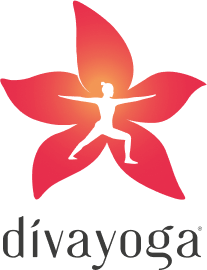DETOX FLOW

Detox flow is specially designed to release all the toxins from the body through the practice of a unique combination of asanas, pranayamas, and kriyas. Detox flow can be done in many styles of yoga. It takes inspiration from Hatha, Ashtanga and can include a Vinyasa style of teaching using therapeutic yoga postures to increase blood circulation in the internal organs responsible for detoxification.
The flow includes several twisting asanas which creates a “squeeze-and-soak” action regulating the synovial fluids of the spine which is connected to the nervous system.
Organs get squeezed in a twist, releasing waste or old blood and blockages out, and help gush the newly oxygenated blood into the muscles, joints, and organs. Twists also stimulate circulation; release tension in the muscles of the spine, abdomen and rib cage; and help to create heat.
It also includes many asanas that massage the internal organs and regulates the glandular and digestive system resulting in complete detoxification of the body and mind.
The systems are very well equipped on their own. But to help the body keep up with the demands of our stressful lifestyles, our natural detox system needs some help. That is where detox yoga helps.
One of the many benefits of yoga is the detoxification of the body and the mind. The three primary systems in our body that are crucial to the elimination of waste are the circulatory system, the lymphatic system, and the digestive system. The circulatory system pumps and filters blood throughout the body, and in doing so, it delivers oxygen to the organs and collects the waste from the cells. The digestive system processes the food we eat and separates the waste from the nutrients that get circulated through the blood and into the liver, thereby eliminating what the body doesn’t need straightaway. These poses can spark lymph and blood circulation to drain fluids from the legs and pelvis and initiate new blood flow to provide energy to organs that help with detox, including the liver and kidneys.
The lymphatic system collects intracellular fluids from the body and transports them to the lymph nodes, removing anything that is harmful before the fluid returns to the bloodstream.
During yoga, every part of the body is pulled, pushed, and twisted causing the elimination of carbon dioxide, lactic acid, and lymphatic fluid from deep within, where other forms of workouts fail to reach.
Pranayama or breathing techniques like Ujjayi and Bhastrika also help in cleansing our energies and providing oxygen to our blood stream. In addition, kriyas like Kapalbhati can help you not only release stress and toxins from the mind and body, it can also help release negative emotions, shake off sluggishness, and energize.
Physical benefits
- Breathing efficiency
- Back strength
- Detoxification
Mental benefits
- Mental refreshment
- Balance of energy
- Mental clarity
- Self awareness
This flow is a part of the Vinyasa traditional series.
The word “vinyasa” is translated as “arranging something in a special way,” in this case, yoga postures. Vinyasa means to move your body in a synchronised yoga flow with breath as the key.
Vinyasa Flow is the world’s most popular yoga form to develop a stronger mind-body connection, to strengthen the body and improve flexibility. It teaches us to cultivate an awareness that links each action to the next one on the mat and in our lives. It focuses on the flow between movements, rather than individual poses.
This popular, flowing style of yoga developed is a sort of "free-form" offshoot of the more methodical Ashtanga Yoga system. Ashtanga Yoga is a powerful and dynamic style of yoga developed in the 20th century by the guru, Sri K. Pattabhi Jois. Ashtanga incorporates the sequence of linked poses called a vinyasa, but where Ashtanga has a strict structure and precise set of rules, Vinyasa Yoga is creative and exploratory.
Vinyasa Yoga contains many, if not all, of the poses included in the Ashtanga Yoga series, but it does not require its students to perform them in the same sequence. For example, in Ashtanga, students of Ashtanga are not allowed to move to the next series of poses without first mastering their current one. Vinyasa Yoga breaks those rules, often including poses from various Ashtanga sequences in one class.
